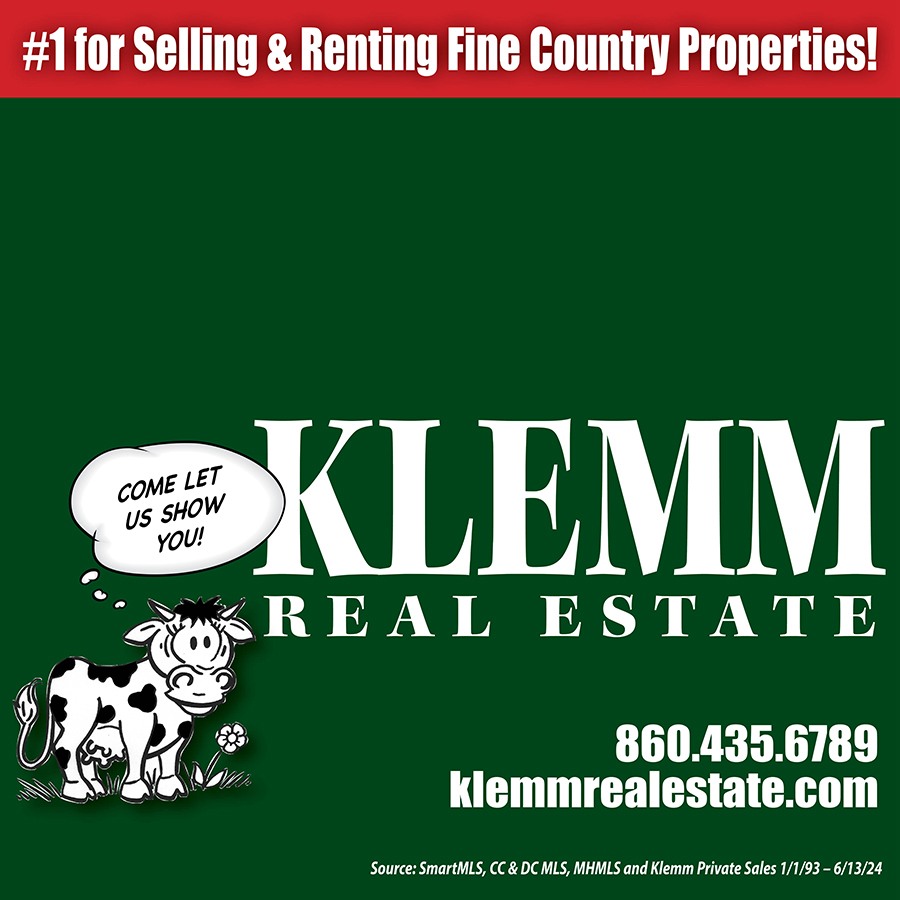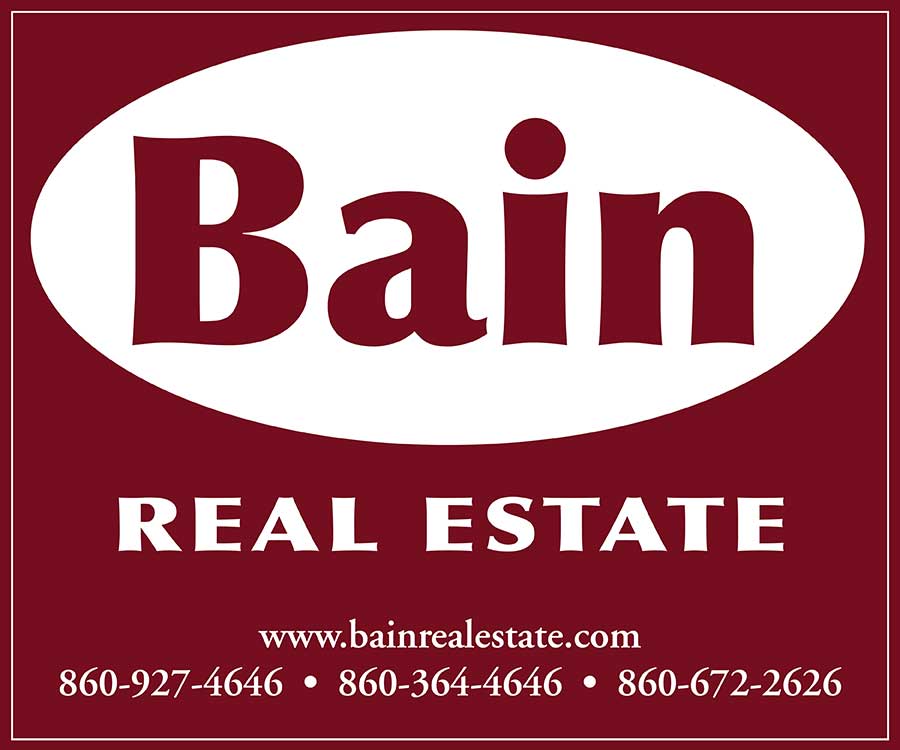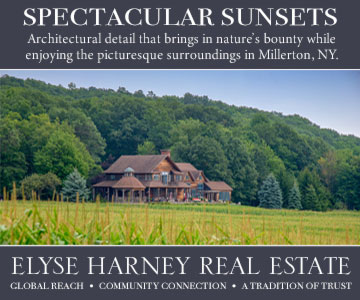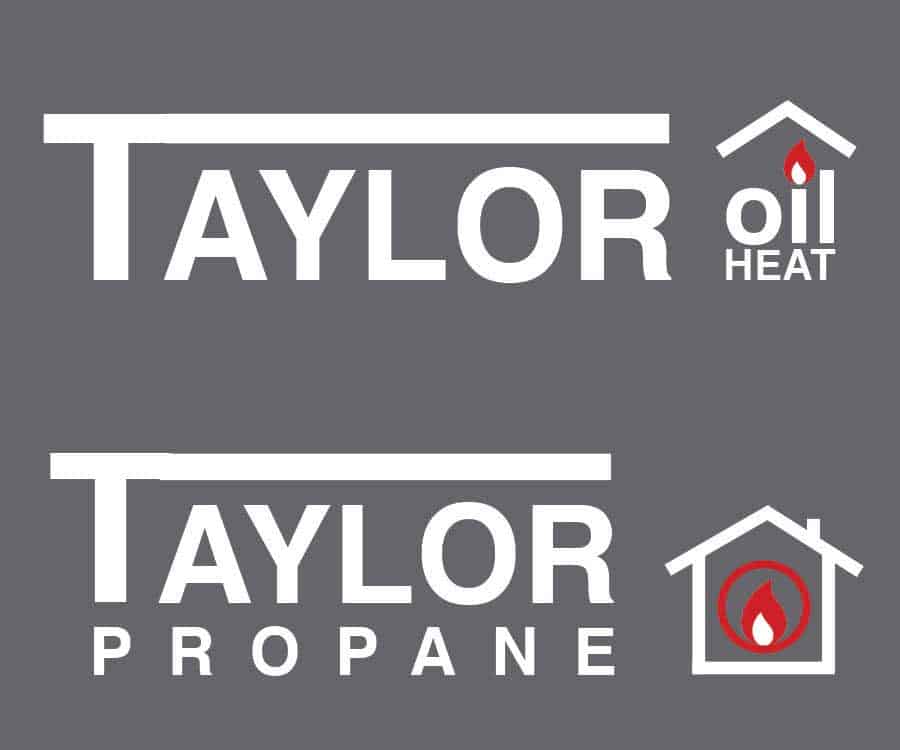Real Estate
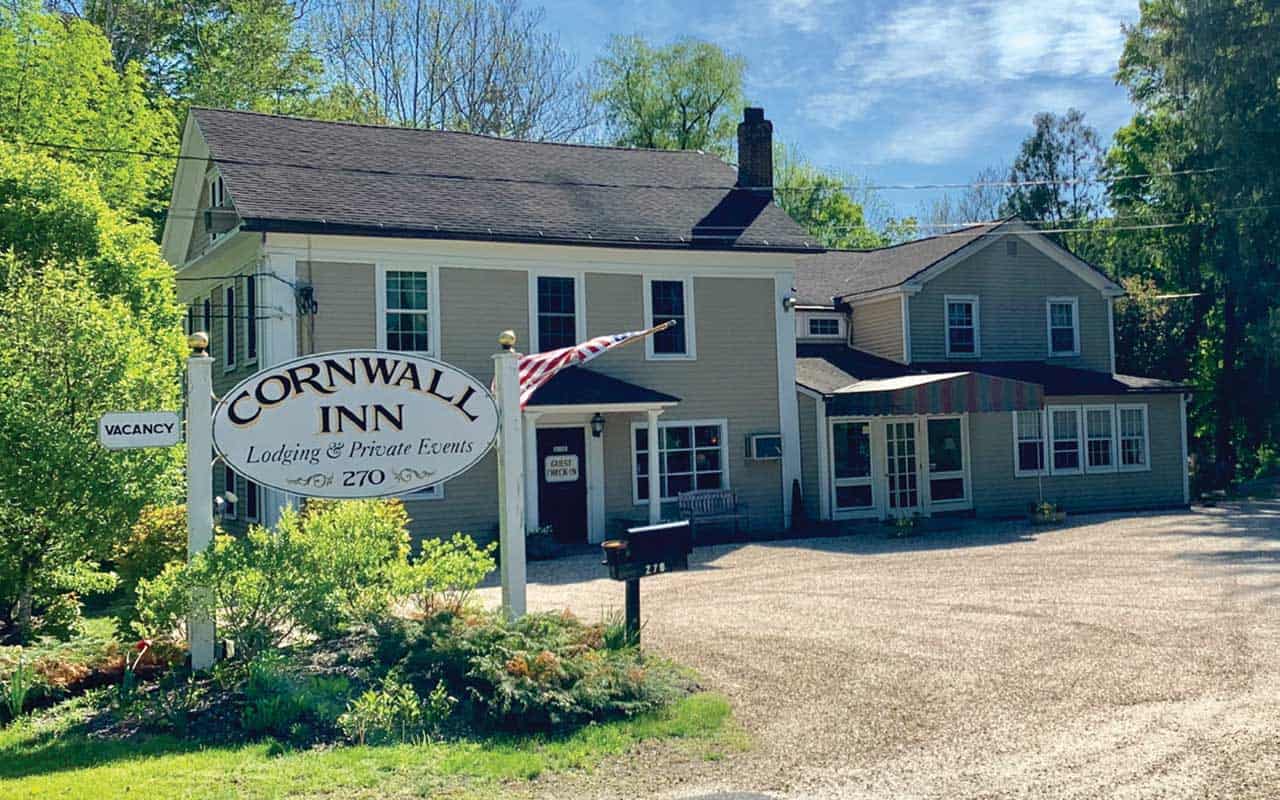
Buying and Selling Inns and Bed & Breakfast
Hasn’t everyone thought of running a countryside inn or a bed & breakfast? How you would transform a historic building with your own chic style, visit with interesting guests, and serve elegant breakfasts? I wondered if this was ever more than a fleeting daydream and whether it could make economic sense. I decided to investigate how much it costs to buy a small inn or bed & breakfast and what it takes to make it a profitable venture. And then how to go about selling once you’re ready for the next project.
What’s the appeal of owning an inn?
Juliet Moore of Elyse Harney Real Estate, and former owner of The White Hart Inn, shared this with us: “While a prescribed return on a business, calculated on a desirable CAP Rate based on the net operating income, is optimal – in my opinion, the short answer is that it is really not realistic with regards to the hospitality business. One needs to buy a restaurant or an inn because you want to run it – it is your business – it is your background – it is your passion; and, you will always think you can do better than the previous owner.”
An inn can become a new life, a new career in an attractive location. It’s hard work, but it’s work some people feel they can enjoy. Done correctly in a destination location, an inn or a B&B can produce income, but it is not a get-rich-quick and get out kind of business. Scott Shortt, a former financial services executive, caught the hospitality bug and bought the Kemble Inn in Lenox, MA, for $1.65 million in 2010 and is in the process of restoring the property “to the grandeur that it should be.” He worked a full-time job the first five years, renovated, and slept on a mattress in the basement until the inn could become his full-time job.
B&B’s serve breakfasts and inns don’t – usually
There is a distinction between an inn and a bed & breakfast, but it’s fuzzy and, perhaps, not a very important one. Typically B&Bs are part of the hosts’ home and the owner lives there. They have fewer rooms and, because they were built as single-family homes, sometimes less privacy than an inn. Depending on the town and state they may be zoned differently than inns or hotels. Inns have more rooms than B&Bs and usually don’t include breakfast in the price of the room. They may have a restaurant and/or a bar and other amenities like a pool, or even a performance venue. (See story on The Egremont Village Inn in this issue). Because inns are typically larger, rooms may be available on electronic booking sites, which is less typical with B&Bs. For better or worse inns often provide less personal hospitality than B&Bs.
There are over 17,000 inns and B&Bs in the US – it’s a $3.4 billion industry
Although each inn or B&B may be small, put together, these independent, entrepreneurial ventures generate an estimated $3.4 billion in economic activity annually according to The Professional Association of Innkeepers International. The average inn has six rooms, over 90% of them with their own private bathroom and high speed internet. The big picture to consider is that nationally occupancy rates are only about 44% at a per room rate of $150. That’s revenues before any expenses! Couples constitute 72% of owners and 79% of all owners live on the premises.
Small lodgings are often classified by the type of income they produce according to Rick Wolfe of The B&B Team, which advises buyers and sellers of small lodgings. A financially viable inn means that there is money left over after paying for the mortgage, the taxes, the operating expenses, and the owner’s salary, and that the business has a track record of producing income. “Feasible” properties could make more money if the inn were managed differently. Prime actions to improve profitability include adding rooms, a bar, a restaurant, special events, or modernizing a worn and out-of-date décor and installing up-to-date booking systems. This “feasible” opportunity usually means a lower price and bank appraisal, and a higher cash down payment to get financing. “Lifestyle” inns suggest that the benefits of inn ownership are personal fulfillment not financial return or perhaps just buying a really elegant home with occassional guests. The owners should have other income from an outside job or retirement savings to support them like Scott Shortt who commuted to Hartford, CT, for five years when he first purchased the Kemble Inn in Lenox.
Specifically what should a buyer expect to ask? What should a seller expect to reveal?
Start with location, location, location. What is the inn near? What sorts of guests does it attract? How easy is it to get to? What occupancy rate is probable? How seasonal is the business? What is the competition? Next look at the actual operating numbers. What is the Gross Operating Income by month for the previous three years calculated based on the number of rooms rented and the average rate. In our area expect to see low occupancy January to April, and peak months from June through October, especially during autumn color.
Next look at Net Operating Income before debt, owner’s salary and depreciation – essentially the cash the inn produces before debt payment and any income to the owner. Expenses will include everything from cleaning supplies, labor, marketing, utilities, insurance, taxes, etc.
What drives the price?
There are never very many inns for sale at any one time in any one region. In all of Dutchess County and Columbia County in New York State, only 15 bed & breakfasts or inns were sold in the last nine years. The largest and most important sale was Troutbeck in Amenia, NY, which was sold in 2016 for $5,919,200 with 45 acres and multiple buildings. While the average price of these 15 properties was over $731,000 because of the Troutbeck sale, the median was only $295,000. After renovation and restyling Troutbeck commands high room prices and operates an excellent restaurant open to all.
The White Hart Inn in Salisbury, CT, was sold after being closed for a number of years for $2.9 million by Pat Best to a consortium of local investors who wanted to return the inn to the center of community life. “It was a noble act to buy the inn,” according to Best. Since there were no operating results for the inn with new luxury suites, Best prepared conservative pro forms based on a 40% occupancy rate. The previous owners invested $6 million in restoring the 16 suite inn, which went on the market in late November 2010 at $5,000,000 and eventually sold in May of 2014 with all its furnishings.
What about selling?
Most inn owners employ an inn consultant like Rick Wolfe before putting the property on the market. These consultants can advise on how to improve profitability and occupancy before sale, present financials in an industry standard format, establish a reasonable listing price and help market the inn. Serious pre-qualified buyers will ask for three years of financials to calculate how much they could borrow based on the inn’s cash flow. No one has to buy an inn, and it can take six months to three years to close a sale. Typically financially viable inns would have at least seven rooms and a 43% occupancy rate.
The Cornwall Inn, located in Cornwall in the northwest corner of Connecticut, is a turnkey 13-guest room property with a pool and separate owner’s house, and is currently for sale for $1,125,000. The owner can provide three years of financials to qualified buyers. David Bain of Bain Real Estate points out that the inn has a top notch commercial kitchen and bar, which could be relaunched as a restaurant expanding the income stream further and three additional cabins which could be converted into guest rooms.
Another example of an inn for sale with a completely different style is the former home of the Rooster Tail in Warren. It is an updated historic 1750 colonial inn with six stunning suites, a contemporary separate owner’s residence that was created in an antique barn, and a stone party barn listed for $1,850,000. The inn has been operated on a private basis only and has no recent operating history. Agent Mimi Harson of William Pitt Sotheby’s International Realty says the property is being actively evaluated by residential buyers as well as by chefs who want to open a high-end restaurant. Harson says the only comments from those that look at the property are, “It is even more spectacular in person than in the photographs.”
Why do inns fail?
Inn brokers and consultants suggest that the primary reason for under performance is the failure of the inn owner to adjust to new demographics, new styles, and new marketing techniques. If you think of bed and breakfasts with sagging beds, floral wallpaper, oak furniture, and dried flowers you are imagining a failed inn. Today guests want bright, neutral colors, Apple TVs, Wi-Fi, and always a luxurious bathroom. Online reviews and photos of your inn can wound an inn’s reputation in the click of a mouse or tap on a phone.
Where to look for an inn?
Rather than driving around and looking for “For Sale” signs there are many online sites that list inns for sale. National and international inns for sale can be found on www.innshopper.com, which currently lists ten inns for sale in Connecticut and 19 in New York State, including $4.5 million for a boutique 18-room hotel in Cooperstown to under $400K for an eight-room bed & breakfast on the Lake Erie Wine Trail. The detailed information provided on each property typically includes contacts for the B&B consultant and/or real estate broker who is handling the transaction.
If you’re really daydreaming you can look at international inns as well like a six-bedroom French villa in Brittany for $400,000. Others sites like www.danamoos of Maine focus only on a particular region or state. Of course your local real estate broker, some of whom have owned inns, can be your most informative source if you are searching locally. •
Christine Bates is a real estate agent with William Pitt Sotheby’s International Realty and has written about real estate issues and market since the first issue of Main Street Magazine in 2013.
JULIET MOORE’S INTERVIEW
What should a buyer look for in terms of return on investment? Is there any kind of multiplier that you aware of – like x times revenue, x times some measure of income?
While a prescribed return on a business, calculated on a desirable CAP Rate based on the Net Operating Income,is optimal – in my opinion, the short answer is that it is really not realistic with regards to the hospitalitybusiness. One needs to buy a restaurant or an inn because you want to run it – it is your business – it is your background – it is your passion; and, you will always think you can do better than the previous owner. The historic figures mean little; you have to put together a business plan of what you believe you can do with the space and your knowledge of the business. Maybe one values the past owner’s Room Occupancy Rate as a tool but that can be destroyed in a heartbeat or, hopefully, greatly increased with hard work.
When we starting looking to open our first restaurant, we spent two years searching for the perfect spot. We were coming up from New York City and first had to identify an area. After we decided on the Southern Berkshires, we came up every single weekend looking for an historic building, on a main road, that would be an appropriate space for the restaurant, and would provide room for us to live, at least, in the early days. We specifically did not want a building where there had been a restaurant, whether successful or not. We wanted a clean slate. There were 3 rentable apartments in the building and we camped out on the main floor on weekends and made our plans. I secured an SBA loan and we spent a year building-in the restaurant; we quit our jobs in NY and moved up a month before opening. That was the spring of 1978 and, to Terry’s credit, The Old Mill is still going strong 42 years later.
A Restaurant or an Inn should be owned by the person, or couple, who are going to run it themselves and they need to be able to step into most of the jobs. It is not a business for just an investor for many reasons: there isn’t enough profit for income for too many people at the top; you need to have a real love/drive for the business to make it work; and you need to be able to jump behind the bar, grab a tray, expedite in the kitchen, clean a room, etcetera – it is by far best if one of the owners is the chef. If there are investors, it should be those who are investing in the principals – who do not expect a big return but, for the good of the area, want to see the property up and running by people in whom they have confidence. To my knowledge, a Limited Partnership is the best vehicle because Limited Partners may not have any input into how the property is run, or they lose their tax status; it is wise to not have too many cooks making the stew. The owners should also buy a Limited Partnership share and they would then be Limited as well as General Partners. The owners will likely also have to sign the mortgage personally, as we did with The Old Mill and The White Hart.
Have you purchased or sold inns yourself? Did you own the White Hart Inn? When?
By 1989, The White Hart had been closed for two years and it was becoming derelict. When we decided to try and save it, I had 3 weeks to raise several million dollars. Our bank committed to the extent of their lending limit but that was not enough so we had to enter into a participatory agreement with lender from Hartford (which was a mistake; I should have stayed local). It was still not nearly enough money, so I put together a Limited Partnership and wrote the proposal with a major legal firm in Hartford in one week; it cost $100,000. to produce the offering. The day I finished it, I waited at our Attorney’s office for the first copy to come off the press and raced from Hartford up to The Old Mill to hand it to a couple we knew, who was interested, as they walked out of the restaurant. By morning they were in – that gave us the confidence to keep going. The shares were $200,000 each so I hired a consultant, and paid him $30,000, just to help me identify and approach potential investors in the area who might be interested and qualified. Three weeks after our first knowledge of the public auction, we stood on the front porch of The White Hart and, after 82 bids, we were the successful buyers. I nearly passed out.
I have so many, many more stories about those days – what was your question?
Oh yes, it didn’t matter what had been done there in the past – it was a clean slate for us. We were going to be serving dinner in 3 Dining rooms and 2 Function rooms. We added a new Kitchen by the Tap Room. We maximized every inch of the property. Of course, the gross is one thing but netting a profit is not so easy. You have to watch every minute of your down time and fill it with functions, meetings, incentives. You have to train constantly – we had 93 employees in those days (not easy to find in the Salisbury area). I believe in the inverted triangle – the servers, bartenders, front desk staff, the housekeepers – they are at the top of the triangle as they have the constant contact with the customer. Everyone else, including the owner, is there to support them. And, the owner has to appear to be there every single minute. (On many New Year’s Eves, Terry and I drove past each other over-and-over on Under Mountain Road, to stagger ourselves so that it looked like we were both at both locations’ parties at midnight.) You have to cut off the people who have too much to drink and you have to rid the place of the people who ruin the experience for others. (We even had to hire a Private Detective once, but that’s another story.)
You also can be made or broken by deliveries. Purveyors will send you what you will accept. They will only bring you the best if you demand it, every single shipment. And there are thousands of items delivered weekly. Every single delivery has to be checked-in with great care – if not the best, you have to send it back. Waste is expensive.
How does someone evaluate demand for rooms? Should competition be considered?
In Salisbury/Lakeville and Sharon there are not enough rooms for the private school event weekends – we often took stranded parents to our home. B&B’s and AirBnB’s are terrific but, I do not know how much they affect hotel room rentals now – they weren’t around when I owned The White Hart. I think it is wonderful that people have so many choices now and can find something they can afford. We just wanted everyone to fall in love with the area and want to come back. If they are staying in a B&B, or rental, they go out to eat; they shop in the stores; there is the big picture. When I travel, I prefer a hotel, as I like everything else that goes with it: the restaurant, the activity, the service at the front desk. We had a very active Front Desk at The White Hart – it was staffed 24 hours a day and it was an information hub for the Town. Those were pre-internet days and people would call to find out what was on television that night… I loved that they thought to call us! And, they would bring us their documents to fax, as we had one of the only fax machines in Town. Our front desk staff was amazing, as were all of the people who made the restaurants so good and made The White Hart hum.
What did you like about owning The White Hart? And then selling it?
I loved everything about owning the Inn. We completely rebuilt it from top to bottom in 1989 but, in those days, we styled it as a formal New England Country Inn. 55 men and women worked for 7 months. The contractors gave our children hard-hats with their names on them and after school they were on site every day. The very first thing we did was to meet with a safety consultant and we put in a very expensive sprinkler system. Once, when a piece of kitchen equipment was professionally moved, but the gas line not properly capped, we had a gas explosion. That sprinkler system, and fast-thinking employees, saved the inn. Terry chose the menus, hired and trained the cooks, and designed the kitchens: the Main Kitchen, the Banquet and Bakery areas, the Tap Room Kitchen. I picked out every fabric, piece of furniture, bit of wall paper and ran the office; the bookkeeping for an Inn is extremely complicated to set up. For the Hunt Room, I picked out a William Morris fabric but the pattern wasn’t made in wall paper so I had the fabric backed – and it, and every single curtain, in the building’s 26 guest rooms and 5 dining rooms, had to be sent out to be fire-proofed before hung. I picked out a tapestry to upholster the furniture and banquettes in the Main Dining Room – it was woven in Italy; when all 90 yards came, they had a run through them – it had to be sent back and rewoven. I bought 50 books of Redoute florals and had 510 prints framed for all of the Guest Rooms and the Garden Room; there were a lot of rooms to fill. A million details. But, opening night was amazing. And, then the NY Times gave the food a rating of “Excellent” and Yankee Magazine did an 11 page story on us… One of my favorite features was the grand piano we had in the Lobby. It was played by young and old, those who could play and those who played at playing. Friends would surround it and sing. I was also given a beautiful child’s wing-backed chair; many a Christmas card photo was taken of a child in that chair. My favorite place to stand was at the end of the bar where I could watch everything that went on in the room. It’s still hard for me not to think that is my spot. Selling it was extremely hard but it was time. The huge interest rate on our large mortgage could not be refinanced in the banking climate of the 90’s and several rough weather winters in a row just made it too difficult. If I were to do it again, I would only raise venture capital – it is too vulnerable a business to be committed to a massive mortgage. We did what we set out to do – The White Hart was thriving and we had made lasting relationships with the incredible people who worked there and supported our dream. How hard is it to sell an inn or b&b? Tips??? Know it’s hard to make generalizations. It is not easy to sell a restaurant or an inn based on income because that is only a result of that particular owner. To the Seller, it is worth the moon; to a Buyer it is worth the land it sits on.
How would you suggest someone go about considering buying an inn? Talk to other inn owners? Employ a consultant? Work with a savvy real estate broker?
Yes, talk to Inn owners but make sure you have a great deal of experience in the field first. Then, work with a Real Estate Broker who handles Commercial Properties and has personal experience in Hospitality ownership.
What are the mistakes people make? Any success stories? Do you think that inns and b&b’s are becoming a better business?
Don’t think you can succeed if you just think you know “what customers want”. Everyone knows what customers want. You have to have worked in the business all the way from bussing tables, to serving, bartending, cooking. And, most importantly, you have to LOVE the service business. If your number one passion isn’t to give a fabulous experience to the customer, if you are in it for the money, this is not the business for you. Also, consistency is the most important quality. It is not easy for a plate to look and taste the same every single time a customer orders it – year in, year out. We had 18+ people in the kitchen at The White Hart and they knew how to do that. It doesn’t matter if you are known for your hotdogs or very high-end French cuisine – it has to be consistent. The sheets have to be the same, the pillows, everything. Everyone has different taste, but people want to know what to expect. Yes, add new items but we felt it was best to offer them as specials and keep what works, and what your customers come back for, over and over. In those days, we had 26 rooms at the Inn but I kept the room numbers the same as they were before the renovations. People loved to come back to the room they had on their wedding night 20 years before and they would remember the room number!
Have air bab’s and vrbo hurt their business and added competition? How has the hospitality landscape changed? It seems to me that potential guests are demanding more than in the past and bathrooms are as important as the room itself?
Bathrooms have always been key. Cleanliness and nice bathrooms. And, personal attention. There was one couple who liked the furniture arranged a certain way, higher watt lightbulbs, etc. It was always a pleasure to please them and they were always so appreciative that we remembered – it was so simple. Any and all other comments really appreciated. I love the hospitality business and it was the best background for Real Estate – they are very similar. In each, there are millions of details and you have to think on your feet 24/7. You just get up in the morning and think that you want to do your best to make your customers happy. And, you try.
© Juliet W. Moore

